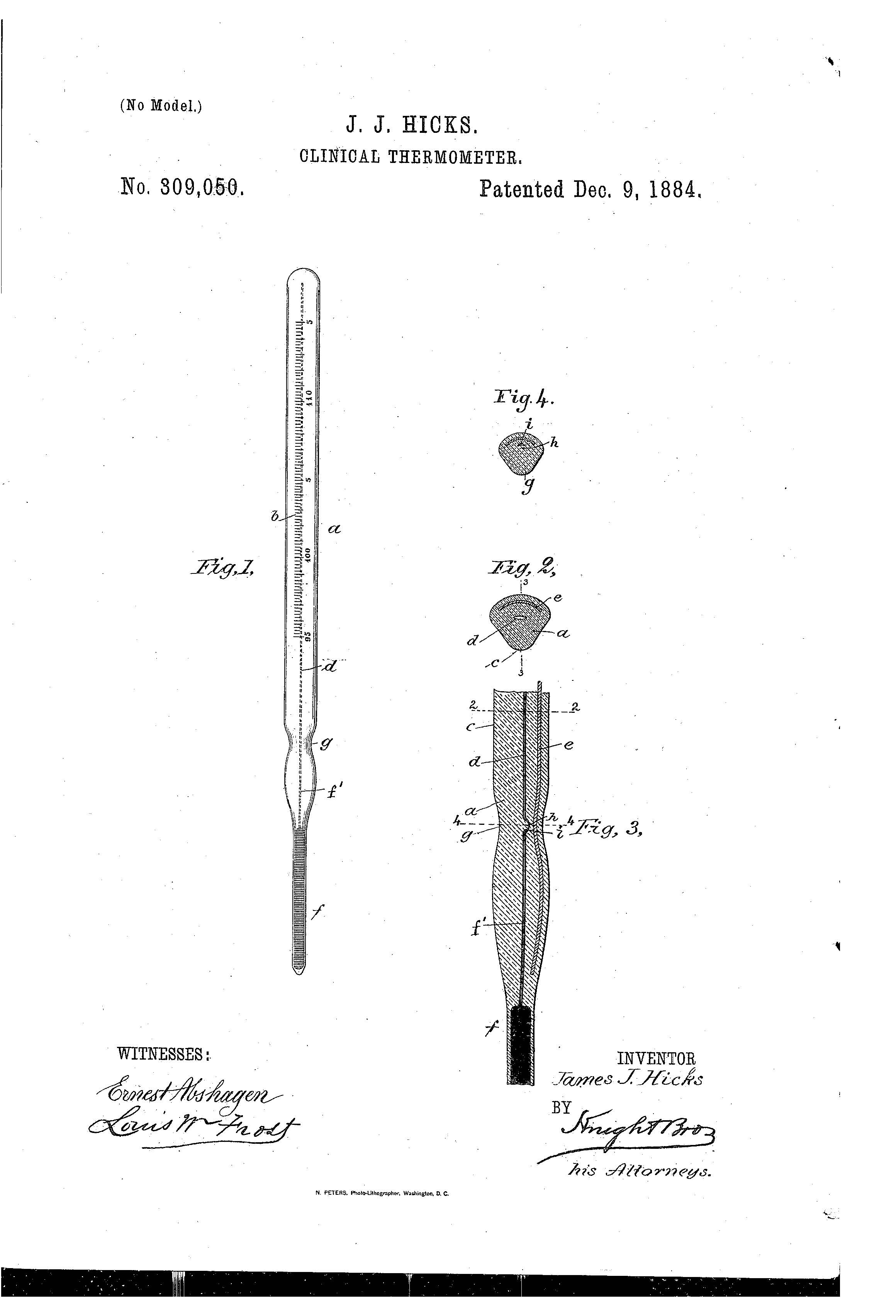On this day in 1884 Joseph Hicks was granted the patent for CLINICAL THERMOMETER. U.S. Patent No. 309,050.
This thermometer registers minute changes in temperature and to this end are required to have a bore very minute relative to the capacity of the bulb; but in order to adapt the mercury to respond promptly or as quickly as possible to the temperature changes, and bring the whole instrument within small dimensions, the capacity of the bulb and the entire quantity of mercury employed should be as small as possible.
Another requirement of the clinical thermometer is that it shall have a registering index. This has been formed of a small body of mercury at the top of the column, forming the head of the column,but separated from the main body thereof, so that as the mercury contracts in cooling the said detached head or index will remain at the highest point, thus forming a maximum register.
The object of the present invention is to devise a construction of clinical thermometers which will afford extreme sensitiveness and prompt response to changes in temperature, and will at the same time admit of reading the indications with facility. The construction of the thermometer is done with a very small bore, a lens-front for magnifying the column, and an elongated bulb of small diameter extended in line with the bore without any interposed chamber, but with a contracted throat to separate the column and form a maximum register.

